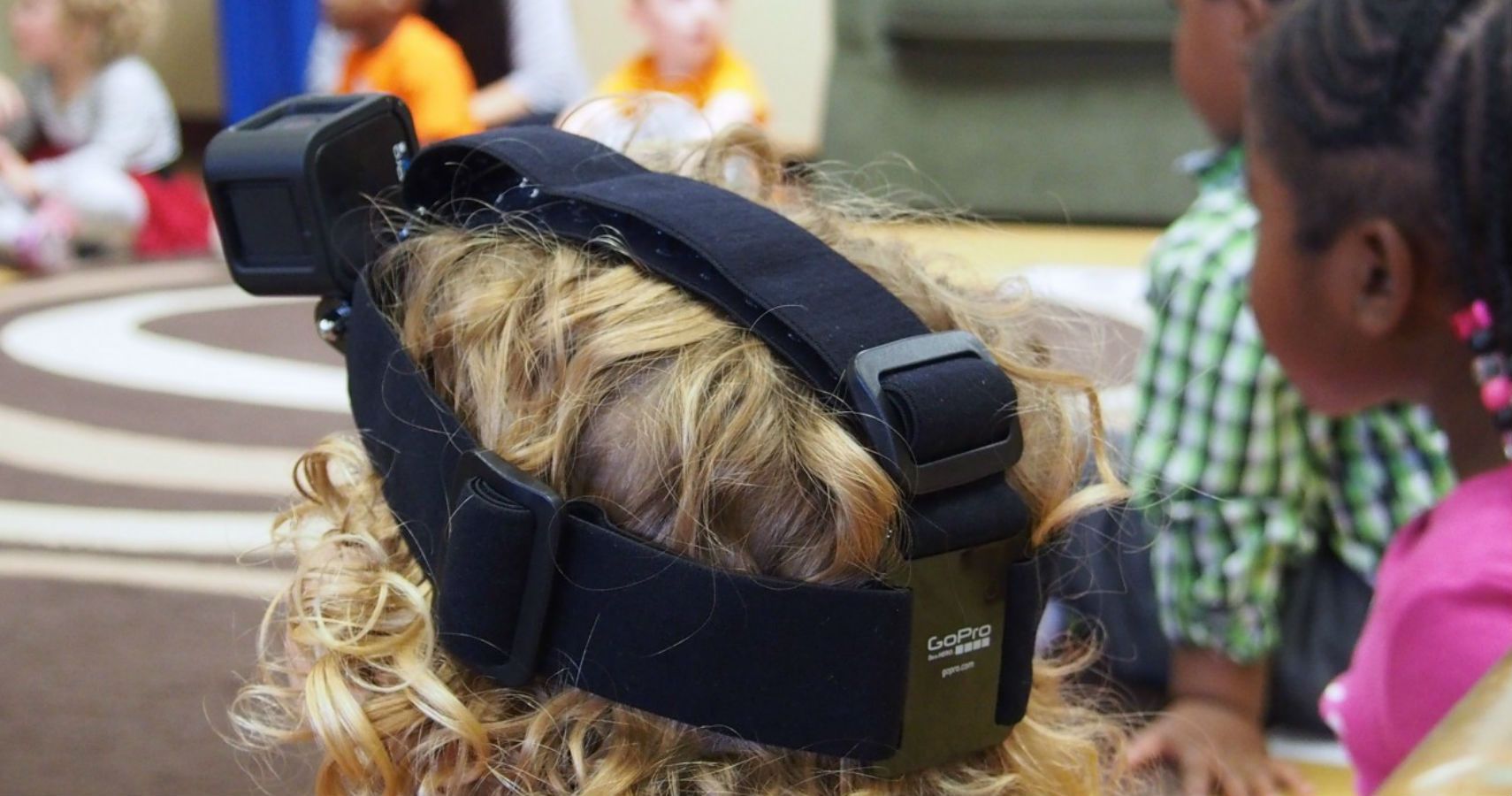Even though kids are in the same classroom together, they will all have very different experiences, a new study confirms.
The study, which was conducted by Ohio State University, looked into children’s classroom experiences by having a group of preschoolers wear a video camera on their head for two hours in one day. Thirteen children took part in the research, ranging in ages from three to four. The kids attended a non-profit childcare center and full-day preschool in the Ohio area.
The kids were each instructed to wear a wireless camera mounted to their heads, each for two-hour chunks of time on a single day, though the study took four days to complete. Each child wore the camera for one hour in the morning, and once again later in the day. The head teacher also wore a camera during the study.
In the end, over 60 percent of the recorded interactions were filmed by the teacher. Interactions with the teacher were also three times longer than those between peers. Four of the thirteen kids interacted with their classmates just as much as they did the teacher. Only four of the kids mingled with their classmates longer than their teacher.
When observing the footage, the researchers were primarily concerned with how the children were exposed to language differently in class. "We found that the duration and frequency of kids' interactions with teachers and peers was very different among kids," Leydi Johana Chaparro-Moreno, the lead author of the study and a PhD student in educational psychology at Ohio State University, revealed. She added, "Overall, children interacted more with the teacher than their peers, but for some kids their peers were an additional source of hearing language."
The study is ground-breaking in that it produced results that could not be easily discovered from traditional research methods. After all, not many studies involve putting a camera on a kid’s head. Previous studies at children’s’ experiences in classrooms were largely focused on how the behaviour of teachers, such as how they spoke to their students. But in doing so, such research failed to take the students’ perspectives into account.
"What was missing was the perspective of the kids. Especially in preschool classrooms, each child may not be listening to the teacher at the same time or interacting in the same way," Chaparro-Moreno continued.
This study as well as future research will be beneficial in helping teachers to identify when they should alter their demeanour to better suit the needs of specific students. "Teachers may adapt how they interact with kids to meet the students' learning needs," Chaparro-Moreno said. “It is also possible that children's language ability and personality may play a role in how they interact with the teacher and their peers."
This study is part of a larger $4.5 million Early Learning Ohio project, which is being funded by the Institute of Education of sciences over the course of five years. The research is "trying to identify those aspects of the classroom experience that are most important to academic development and social development," said Laura Justice, the principal investigator for the project, explained.
Researchers are considering using other technologies, like the head-mounted cameras, to gain data. They’re currently considering using location sensors in future projects.

